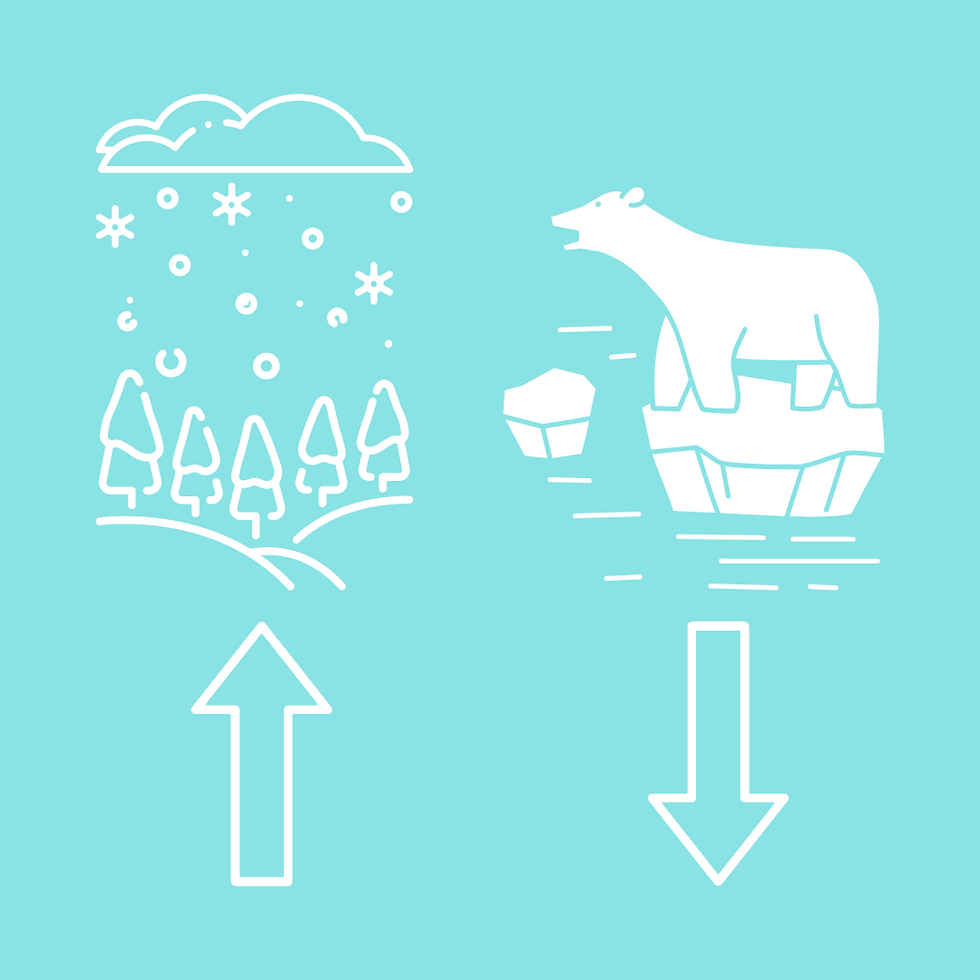NOAA Global Snow and Sea Ice Report Indicates Decadal Trends: Slightly More Snow Cover, Slightly Less Sea Ice
- The Earth & I Editorial Team

- Dec 22, 2023
- 2 min read
Updated: Jan 18, 2024
The National Oceanic and Atmospheric Association (NOAA) releases a monthly global snow and ice report that focuses on the Northern Hemisphere and sea ice. The report’s data is taken from Rutgers University Global Snow Laboratory (from 1966 to 2023) and the National Snow and Ice Data Center (from 1979 to 2023). The report for November 2023 indicates a 1.46% increasing decadal trend in Northern Hemisphere snow cover but a 2.23% decreasing decadal trend in global sea ice.

The 58-year average of snow cover for the Northern Hemisphere, North America with Greenland, and Eurasia are 34.36 million square kilometers (13.26 million square miles), 13.58 million square kilometers (5.24 million square miles), and 20.77 million square kilometers (7.99 million square kilometers), respectively.
The Northern Hemisphere snow cover extent for November 2023 was 35.59 million square kilometers (13.74 million square miles), which was 540,000 square kilometers (210,000 square miles) above the November average of 1991–2020 of 35.05 million square kilometers (13.53 million square miles).
The North America and Greenland snow cover extent for November was 13.59 million square kilometers (5.25 million square miles), which was 280,000 square kilometers (110,000 square miles) above the November average of 1991–2020 of 13.87 million square kilometers (5.36 million square miles).
Snow cover extent over Eurasia in November was 21.99 million square kilometers (8.49 million square miles), which was 810,000 square kilometers (310,000 square miles) above the November average of 1991–2020 of 21.18 million square kilometers (8.18 million square miles)
Sea ice has been on a negative decadal trend across the board. Northern Hemisphere, Southern Hemisphere, and Global sea ice area are decreasing by 4.83%, 0.57%, and 2.23% per decade, respectively.
Global and Southern Hemisphere sea ice were both the second lowest in Novembers of 1979–2023, at 23.93 million square kilometers (9.24 million square miles) and 14.27 million square kilometers (5.51 million square miles), respectively.
Sources:
NOAA National Centers for Environmental Information, Monthly Global Snow and Ice Report for November 2023, published online December 2023, from https://www.ncei.noaa.gov/access/monitoring/monthly-report/global-snow/202311
Rutgers University Global Snow Laboratory and their tabulated data







Comments